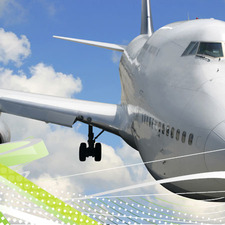For James Daffley, a Belfast city tour with a burly veteran of the troubles revealed not only a rejuvenated city coming to terms with its tumultuous history but, also, an insightful glimpse into its future.
All in Travel Tips
The Inside Scoop on Paris Museums
Writer Dorty Nowak has lived in Paris, on and off, for ten years. When friends planning a trip to the City of Lights for the first time ask her what museums they should visit, her number one choice, the Carnavalet, rarely makes the guidebook "must visit" lists. Get the inside scoop on what makes it so special.
NEW HAMPSHIRE—Presidential Primaries, Sightseeing, Skiing, and Summer Fun
by Judith Fein
When I was a child, living in New York City, my family loaded themselves and their belongings into a car every August and headed for New Hampshire. There was never any question about going somewhere else; we had allergies and Bethlehem, New Hampshire had no pollen. In a fit of hopeless nostalgia, I decided to go back this past summer, to see if I could find the locus of the sneeze-free bungalow colony where we stayed. And, being a travel addict, I decided to check out what else there is to see in New Hampshire with 10 days, a car, and a desire for culture, charm, a foodie infusion, local attractions, art, nature, and quirk.
I discovered that New Hampshire is a year-round destination: Fall foliage viewing, skiing, and Presidential primary candidate viewing that starts in the Winter, and touring and hiking in the Summer.
Editor's Note: This article is part of a new series by writer-photographer Paul Ross featuring field-tested reviews of places, products and services that enhance the travel experience. All are evaluated honestly. If something is just bad, he won’t write about it. If it's really bad, or darn right dangerous, he will warn you.
Story and photos by Paul Ross
This year I decided to celebrate my birthday early in San Francisco.
As an AARP-certified senior, it’s years since I’ve been festive about my natal day and even longer since I’ve visited “Baghdad-by-the-bay” (coined in the 1940’s by San Francisco columnist Herb Caen). Growing up in Southern California, I osmotically acquired a slight sense of residual rivalry toward Frisco. We had sun, surf, sand, and they had fog, cold, and business. As an adult, I figured it was time to explore what many locals call “the City” had to offer.
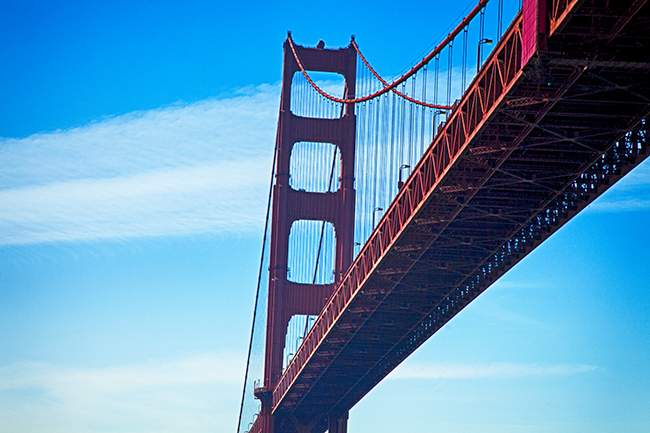 The Golden Gate Bridge. (The only ways to get this particular view are swim, jump or take a bay cruise. I recommend the last.)
The Golden Gate Bridge. (The only ways to get this particular view are swim, jump or take a bay cruise. I recommend the last.)
BAY AREA CLASSIC
I decided to start out with a Bay Area classic: the venerated Mark Hopkins hotel atop elegant Nob Hill via cable-car-carrying California Street. The hotel features a museum of the hotel’s colorful history from its Victorian era founding through its heyday housing of celebrity guests; their favorite watering hole was the Top of the Mark with its almost 360 degree view.
I was fascinated by nostalgia-laced mementos and exhibits, like a video interview with a nonagenarian who was once a nude model and photos of the big bands that had played there. “The City” preserves her majesty in ornate buildings and cable cars, one of which I rode down to Chinatown, while vowing to hike back up the really steep slope to work off Sum of my Dim dumplings.
When, on a family vacation, I first went to Chinatown as a kid, my grandfather took us all to a restaurant frequented by Danny Kaye, so of course I had a yen to go back. Located on heavily touristic Grant Avenue, the food is so tired that it could’ve been leftovers from Kaye’s days. But when I walked a few blocks from Grant to Jackson Street, I discovered Z & Y, which, despite its bland name, featured hot and spicy Szechuan delights I never dreamed of as an L.A. boy. Z&Y is on the same block as the P&R and the ABC restaurants and is as easy to find as 1,2,3.
A Partner Post by PerpetualExplorer.com contributor, Emma Corcoran.
Two or three times a week, Jay Savsani hosts a meal on the rooftop of his Chicago apartment complex. Last week his dinner guests were two Swiss tourists, and this week he’ll be hosting some fellow Chicagoans. Jay and his fellow diners are strangers but have connected through MealSharing.com, the food-centered social networking site Jay founded last year.
MealSharing allows diners and hosts from around the world to meet and share a home-cooked meal. Hosts put a profile on the site, which lists the types of food they usually cook and displays photos of their past culinary creations. Guests can then make contact and request a meal. MealSharing is a free platform; it costs nothing to participate as a guest or a host in this “couchsurfing for foodies” social movement.
“We come from a mission where we care about bringing communities together; be it from an international standpoint or within the local area,” says Jay, who says that “MealSharing is platform that connects travelers; however people also use it as a way to eat with other meal-sharers in their hometown.”
Editor's Note: This is the first article in a new series by contributor Paul Ross featuring field-tested reviews of places, products and services that enhance the travel experience. All are evaluated honestly. If something is just bad, he won’t write about it. If it's really bad, or darn right dangerous, he will warn you.
Here’s what he's found for you this time:
- One vintage California hotel with a retro restaurant and a speakeasy bar.
- One steal of a deal at a top eatery in Santa Fe, New Mexico, that’s ideal for celebrating anything.
- Two pieces of gear: an easy, convenient and affordable way to communicate while overseas, and a compact, dedicated, hi-def time-lapse camera for less than $300.
by Paul Ross
California Retro
Part of my cred as a native Angeleno is that the hospital where I was born has been torn down. I lived a lot of my life in the crawling sprawl of that city. I can’t really say I grew up there because showbiz’s youth obsession has always eschewed “growing up.” Los Angeles is where history barely clings to the margins and a restaurant can boast without irony that it’s been “a tradition since this afternoon.”
I love the rarity of the Big Orange’s old buildings that survive in the corners of reinvention central. The Georgian (www.Georgianhotel.com) is just such a place; her face is a blend of Romanesque Revival and Art Deco and, like many in Southern California, she’s had a few cosmetic touchups over the years. For one who is now celebrating her 8th decade, the old girl looks pretty good.
As a nostalgic anniversary nod, the indoor restaurant and the veranda with a view of the Pacific Ocean are offering a ”Prohibition Era” menu that includes both historic cocktails and vintage culinary specialties. Among the classic imbibables are a French 75 (sparkling wine & gin), the martini-esque Negroni, the whisky-based Manhattan and Rob Roy and a harken-back-to-Hollywood’s heyday Brown Derby (bourbon, grapefruit juice and honey). All of these are in the $9 to $12 range. After sipping a couple samples, and eating bygone staples like the Monte Cristo sandwich and Waldorf salad, I was glowing like the sunset and sinking into the woven wicker chair.
Once the sun was down, I wandered inside the hotel, where deco design furnishings graced the lobby. Somewhere there was music: Sinatra, Satchmo, Cole Porter, show tunes.
“ ’want to see our secret surprise?” the bartender asked.
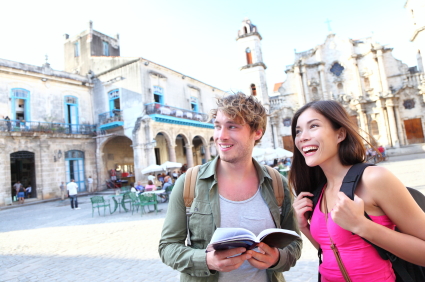 I’ve been fortunate enough to travel all around the world but also witnessed an unbelievable array of street scams and hustles. From Cairo to Caracas, Amsterdam to Amman, someone was always trying to sell me wolf tickets: the fake drunk, the razor blade slash, the Rio shoe scam, money exchange bait-and-switches, shifting walls, high-speed car chases through barrios, muggers with machetes, riots shrouded in tear gas, clans of pickpocketing gypsies, exotic temptresses who slip something in your drink, being a guest in a Third World jail, and running for my life from the Triads, the Chinese mafia. I even survived an elaborate and well-orchestrated grift in Bolivia involving fake policemen with a fake police car and a kilo of fake cocaine that had me sweating like a hostage. But please don’t let all of this discourage you from grabbing your passport and exploring the beautiful world we live in; you’ll find most places to be as safe as your front porch if you exercise some basic rules of caution:
I’ve been fortunate enough to travel all around the world but also witnessed an unbelievable array of street scams and hustles. From Cairo to Caracas, Amsterdam to Amman, someone was always trying to sell me wolf tickets: the fake drunk, the razor blade slash, the Rio shoe scam, money exchange bait-and-switches, shifting walls, high-speed car chases through barrios, muggers with machetes, riots shrouded in tear gas, clans of pickpocketing gypsies, exotic temptresses who slip something in your drink, being a guest in a Third World jail, and running for my life from the Triads, the Chinese mafia. I even survived an elaborate and well-orchestrated grift in Bolivia involving fake policemen with a fake police car and a kilo of fake cocaine that had me sweating like a hostage. But please don’t let all of this discourage you from grabbing your passport and exploring the beautiful world we live in; you’ll find most places to be as safe as your front porch if you exercise some basic rules of caution:
1. Stay ready and you won’t have to get ready.
Before you embark make copies of your passport, medical card, credit cards, and travel itinerary. Give a copy to a friend back home and keep one set with you, separate from the real thing. Email any pertinent information to yourself through a web based email account so you can get it from any hotel or internet café if needed. Check in with the U.S. embassy when you arrive. I even keep $20 folded under the sole of my shoe for emergencies.
2. Don’t be the ugly American.
Don’t draw negative attention to yourself. If you’re going to party overseas (which I highly encourage) don’t get too drunk and always take a taxi at night. Don’t accept an open drink from someone or leave yours unattended. Most importantly, never mess with drugs while you’re in a foreign country - I have a friend serving five years in a Costa Rican prison who can back me up on this.
by Jules Older
For travelers, some things are essential. Others should be left at home or not acquired in the first place. Here’s this year’s compilation of things you need and one thing you don’t.
The outdoors maxim, “Take nothing but pictures; leave nothing but footprints,” is where we’ll start.
TRAVEL ESSENTIAL #1
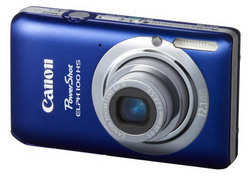 If you're gonna take pictures, I've got a camera for you. It’s small enough to stick in your pocket, light enough to take on a mountain climb, cheap enough to let you pay your mortgage … and powerful enough to blow you away. It blew me away, and I'm used to great cameras in small packages.
If you're gonna take pictures, I've got a camera for you. It’s small enough to stick in your pocket, light enough to take on a mountain climb, cheap enough to let you pay your mortgage … and powerful enough to blow you away. It blew me away, and I'm used to great cameras in small packages.
The camera in question is the Canon PowerShot ELPH 100 HS. It weighs less than five ounces, fits in a shirt pocket, and costs less than $200. But its real strength lies in what it can do.
Video? Full hi-def. Sound? Impossibly good — doubly so for a camera with such a tiny microphone. Low-light capability? Still can't believe what I've captured in gloomy rooms. Zoom lens? Big zoom but loses sharpness when you really pull in that distant egret. Viewfinder? No, but you'd better get used to that. Like the typewriter or phonograph, the viewfinder is a dying species.
After testing the 100 HS on snow and off, in two hemispheres, I pronounce it the best small camera I've ever tried. And the best buy. www.canon.com
TRAVEL ESSENTIAL #2
From pictures to footprints. I've been testing two shoes — one made for walking and one for running. My first question: Does that designation really make a difference?
words + illustration by K. Michael Crawford
I can’t believe the day is finally here. After months of keeping my head to the grindstone to finish my latest book, I am getting a vacation. So now, I can gather up my finest vacation wear and head out the door for a little fun in the sun or maybe a Shirley Temple on the beach. Wherever this vacation goes, I will follow.
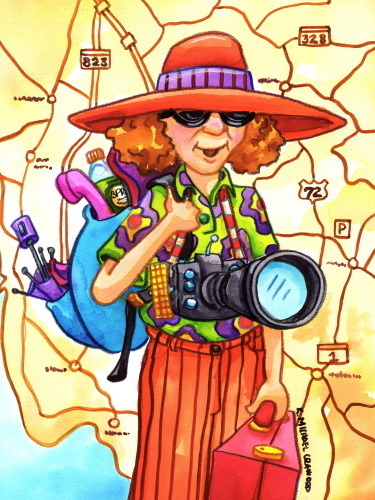 Before I head out the door, I know that every good vacation needs the essentials. So, with first things first, I forge through my closet to make sure I have the perfect vacation clothing. You have to look just right, part “world traveler” and part “oh yeah, I don’t stand out too much and look like an idiot.” To select the right look, I put on a slightly wrinkled top with comfortable wrinkled pants. Next, comfortable sneakers are always my choice of shoes for getting away from it all. Besides being great for walking, they are great with the “airline only lets me have one bag now” look. The last thing I do, as far as my appearance goes, is put my hair up for easy maneuvering through new and exotic places.
Before I head out the door, I know that every good vacation needs the essentials. So, with first things first, I forge through my closet to make sure I have the perfect vacation clothing. You have to look just right, part “world traveler” and part “oh yeah, I don’t stand out too much and look like an idiot.” To select the right look, I put on a slightly wrinkled top with comfortable wrinkled pants. Next, comfortable sneakers are always my choice of shoes for getting away from it all. Besides being great for walking, they are great with the “airline only lets me have one bag now” look. The last thing I do, as far as my appearance goes, is put my hair up for easy maneuvering through new and exotic places.
Now, for the add-ons. Everyone knows that you need a big wamping camera to announce to the locals, “Come and get me. I am just waiting to be mugged.” So I place my Hubble Telescope camera around my neck, followed by a straw hat large enough to house a small family. The hat is also used to shield any type of ray from the sun two universes over and prevent any orbiting satellites from identifying that it’s me in the photo.
Any good tourist knows what goes in their backpack or satchel is the most important element to enjoying that fun-filled vacation. You never know what you will stumble upon, so you want to be prepared for the unexpected, or in my case most of the time, the unexplained.
Becoming A Fan
by Dorty Nowak
Hot and frustrated, I stared at the pieces of the supposedly easy-to-assemble electric fan that came with nine parts instead of the required ten. My apartment, like most buildings in Paris, has no air conditioning and, after several days of unremitting heat, I was desperate. I picked up the instruction sheet, ignoring the number for the help center that was probably located in China, and folded it into a fan. My makeshift fan worked surprisingly well, reminding me of a museum that I had been meaning to visit ever since I read several years ago that it might have to close.
by Jules Older
I'm a travel writer and videographer. I fly to New Zealand, drive to San Jose, train to Banff, ferry San Francisco Bay. I've come to know what travelers need and what they're better off without.
So here's my list: what to buy and one thing to avoid. Here we go…

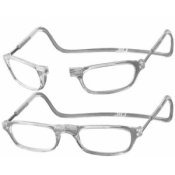 Clic reading glasses. They've gone up in price from about $30 to just under $80 (or $24.99 at The Trip Shop), but they're still savers of time and space. One pair of Clics replaces, in my case, a dozen reading glasses, one in every room of the house, one in the car and one in the place I put them where I'd never forget them and then forgot them. Clics, which you can buy online, just hang around your neck waiting to be magnetically clicked into action. I never travel without ‘em. And I no longer use strong language when searching for my accursed glasses. www.clicgoggles.com
Clic reading glasses. They've gone up in price from about $30 to just under $80 (or $24.99 at The Trip Shop), but they're still savers of time and space. One pair of Clics replaces, in my case, a dozen reading glasses, one in every room of the house, one in the car and one in the place I put them where I'd never forget them and then forgot them. Clics, which you can buy online, just hang around your neck waiting to be magnetically clicked into action. I never travel without ‘em. And I no longer use strong language when searching for my accursed glasses. www.clicgoggles.com

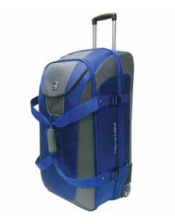 High Sierra luggage. First rule of suitcase: It’s gotta have sturdy wheels. Second: Must be as light as possible. Third: Has to hold everything you need. If, like me, you're a skier, that means a lot of holding. Between boots, helmet, gloves, parka and ski pants, we don’t travel light.
High Sierra luggage. First rule of suitcase: It’s gotta have sturdy wheels. Second: Must be as light as possible. Third: Has to hold everything you need. If, like me, you're a skier, that means a lot of holding. Between boots, helmet, gloves, parka and ski pants, we don’t travel light.
One bag that meets all these requirements is the High Sierra 32” A.T.GO expandable, wheeled duffel. It’s big enough to hold everything, thus avoiding airline extra-bag charges. It’s light enough to save your back and avoid airline extra-weight charges. Sturdy zipper, strong wheels, good balance. If you pack big, you'll be glad you got it. And though it retails for $340, The Trip Shop (powered by Amazon) has it at $126. www.highsierrasport.com

Salomon shoes. Start with this: For any footwear — hiking boots, running shoes, ski boots, sandals — fit is 10 times more important than brand. If they don’t fit in the store, when you get to the trail, the track, the mountain or the beach, expect a world of pain.
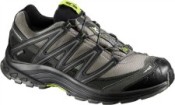 That said, if they do fit (and they fit me better than any other brand) Salomon athletic shoes are your best bet. That’s because Salomon came up with QUICKLACE — where one pull replaces tying and retying laces. It’s Lacing for the Lazy. Like me.
That said, if they do fit (and they fit me better than any other brand) Salomon athletic shoes are your best bet. That’s because Salomon came up with QUICKLACE — where one pull replaces tying and retying laces. It’s Lacing for the Lazy. Like me.
Ah, but which model: the XA Comp 3 or Wings? The XA Comp 3 is a bit lighter, 350 grams, and somewhat cheaper, about $100. Wings has more padding, which means more protection from pavement. It also means more weight, 390 grams, and more moolah, $130-160. www.salomon.com/us
words + photos by Elyn Aviva
At last the long-awaited day arrived. Our kids (Jesse and Yui) and Sophie, our adorable granddaughter (two years and eight months old), were flying from California to visit us in Spain. My husband, Gary, and I took the train to Madrid on Wednesday, the day before they were supposed to arrive, and spent the day exploring museums and sipping espresso at outdoor cafés. It was a lull in the middle of Holy Week, which runs from Palm Sunday through Easter.
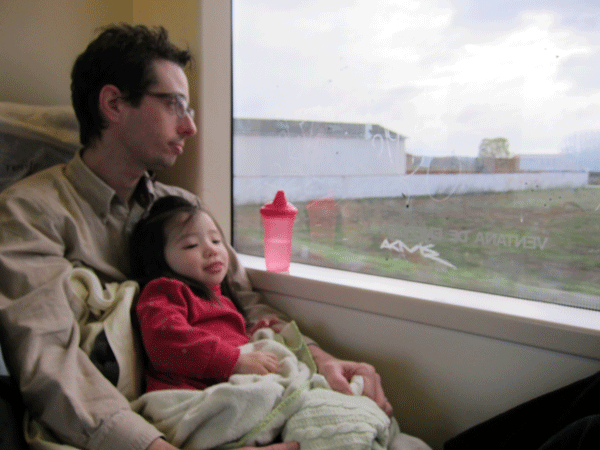 That night, just before we went to bed, the cell phone rang. It was Jesse, my son, calling to say their flight had been cancelled and they would update us when they knew more. Two hours later, another call. Jesse again. They’d managed to be rebooked, but instead of arriving at Barajas Airport at 11 a.m. on Thursday, they would be arriving at 7 p.m. No problem, we assured them. We were relieved they were still arriving the same day.
That night, just before we went to bed, the cell phone rang. It was Jesse, my son, calling to say their flight had been cancelled and they would update us when they knew more. Two hours later, another call. Jesse again. They’d managed to be rebooked, but instead of arriving at Barajas Airport at 11 a.m. on Thursday, they would be arriving at 7 p.m. No problem, we assured them. We were relieved they were still arriving the same day.
The initial plan had been to drive north on Thursday to Sahagún de Campos, the small town where Jesse and I had lived for a year in 1982. Jesse was hoping to reunite with schoolmates he hadn’t seen in 28 years. These friends were returning to their pueblo, Sahagún, to celebrate Holy Week. We realized that if the kids arrived at 7 p.m., by the time they got their luggage and we picked up the rental car, it would be too late to drive all the way to Sahagún. So Gary went online (we had free wifi at our hotel) and booked two rooms in a hotel in Segovia, en route to Sahagún. We knew that Jesse and Yui wanted to see Segovia, so we figured that would make the best of the situation.
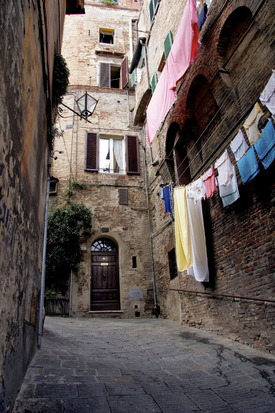 Why is it that the image of colorful clothes hanging on a line and fluttering in the breeze in a foreign country is so appealing and picturesque? I often grab my camera to snap a photo when I see it, but, somehow, when I have to do my own laundry in the same country, I consider it a chore. Dirty laundry. They say you shouldn’t air your dirty laundry, but when you’re traveling for more than a week or so, you have to get it clean somehow.
Why is it that the image of colorful clothes hanging on a line and fluttering in the breeze in a foreign country is so appealing and picturesque? I often grab my camera to snap a photo when I see it, but, somehow, when I have to do my own laundry in the same country, I consider it a chore. Dirty laundry. They say you shouldn’t air your dirty laundry, but when you’re traveling for more than a week or so, you have to get it clean somehow.
Maybe the ideal trip is 7-10 days. It’s possible to bring enough clothes for that amount of time. You come back with a suitcase full of dirty laundry and toss it in the washing machine. That’s the ideal trip length for some folks, perhaps, but it’s way too short for me! I prefer packing enough clothes for a few days in a small suitcase and taking my chances about getting them clean while on the road.
I’m always willing to have someone else do my laundry if the price is right. Laundry by the kilo at a lavanderia in the Galapagos was so easy! Drop off in the morning; pick up the same night. It comes back all neatly folded and wrinkle-free. It worked in the rest of Ecuador too. When we stayed in a place for a couple of days, we managed to find a lavanderia in the neighborhood. It was always much cheaper to schlep our clothes to the lavanderia instead of handing them over to the hotel desk. So, for about $10 or $12, we had clean clothes for our travels.
Newfoundland: Three Lifetimes in Three Days
by Jules Older
I'm a travel writer, which means I'm a hit-and-run artist — New Zealand’s North Island today, the southern Sierra tomorrow. I'm the man who rarely returns.
Except to Newfoundland. I've been five times to Canada's easternmost, poorest and most interesting province. That chunk of rock in the North Atlantic, closer to Ireland than to Vancouver, 1,600 miles east of New York, captured my heart an hour into my first visit.
On the latest visit, I experienced three lifetime thrills in three consecutive days. Where else on earth can you do that?
THRILL ONE: ICEBERGS
It began in the tiny town of Springdale, where we hooked up with ace pilot Rick Adams, owner-operator of Springdale Aviation Ltd.
I flew over and around massive icebergs making their way south from Greenland. Never before had I seen a berg, and now they were scant yards below the Cessna 185's wing.
But if iceberging from a low-flying plane is a thrill, berging from a sea kayak is a life event. Because sea kayaking has a very steep learning curve -- you can be moderately proficient in an hour or so -- and because icebergs have a tendency to get stuck just offshore in the province's protected harbors, the experience is open to the many rather than the fit few.
It's a stunning experience. I drove over a hill and down into an outport, Newfoundland for coastal village. My heart thumped a little louder as I spotted the gleaming white of half a dozen icebergs towering above the dark water like dollops of cream on a chocolate cake. I couldn't wait to haul the kayak off the roof of the van.
Hidden Venice Beach: A Walking Tour
Someone once wrote that if you tip the United States on edge, everything that’s loose will slide down to Los Angeles. I would add, if you tipped Los Angeles on edge, it will all slide down to Venice Beach.
Few visitors stray far from the boardwalk. Those who don’t miss the best show of all -- the other attractions that make Venice Beach the largest spontaneous outdoor theme park/playground and one of the most interesting communities in the world. To discover the hidden highlights of Venice Beach, just follow this easy, leisurely walking tour. It should take about three hours or more if you want to shop, linger, and eat, or less than three if you are in a hurry.
by Jules Older
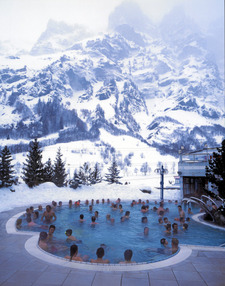
- Moisturize! Moisturize! While every cheap North America motel provides hand lotion and conditioner, even the better Swiss hotels may not. Bring your own or buy some in Switzerland.
- Conquer the duvet. Your Swiss bed will come with a duvet. Though loved by Europeans, I loathe it. It’s always too hot, and you can't peel off layers in the night. Swiss sleepers solve this by opening a window, throwing out a leg (out from under the duvet, not out the window) and, if they're still too warm, getting out from under and snuggling up to it. Maybe you'll succeed where I've failed.
- Learn what “on time” really means. You think it means within five minutes of the specified hour. In Switzerland, it means you missed your train. Or bus or ferry or paddle wheeler or tram or the plane home. These are the people who invented the wristwatch. Punctuality is a prime virtue, well ahead of purity of mind and spirit (see 5. below). When they say the train leaves at 9:02, don’t show up at 9:03.
- Get fit before you leave home. Compared to the ever-expanding North Americans and despite all that cheese and chocolate, Swiss are rail thin. Why? They walk everywhere, including up long flights of stairs. On my last trip, two 76-year-olds — one a female art collector in Lucerne; the other a male tour guide in Bern — beat me up flight after flight. And I'd been skiing all winter.
- Expect to be puzzled. On Swiss television, 10 p.m., Channel 33, stands a woman with a mike in hand. She has an intensely thoughtful look, a furrowed brow, and she's writing feverishly on a blackboard. The woman is wearing a miniskirt. And nothing else. The next morn, my Swiss friend Michelle explained it to me, but I’ll leave that surprise as a way for you to make Swiss friends of your own.
- Go public. You can get anywhere and everywhere in Switzerland by public transport. Trains leave directly from the airport. They are beautifully timed to hook up with other trains, which are perfectly timed to meet buses, boats, even mountain trams. Everything runs like, well, a Swiss watch.
by Judith Fein
The worst part of travel isn’t the security checkpoints with prison-issue wands, puffs of air blowing in your face or gloved agents pawing through your belongings. It’s not the airline seats with their lumbar supports that spear your spine or the $2.25 you pay for a small bottle of filtered tap water at airport restaurants. It’s not the jetlag—which can be so brutal that your left foot doesn’t know where your right foot is walking—or the suitcase that vanished with the travel clothes, gadgets and gear you have spent half a decade assembling.
The worst part of travel is actually coming home. One day you are in Peru, gaping at Machu Picchu or in Quebec City, learning about why the English and the French both coveted the area. Maybe you’ve been cycling in Italy, trekking in Nepal, cruising down the Nile in Egypt, or sauna hopping in Finland. The next day, you open the door to your digs and…chaos.
The answering machine is blinking, there are hundreds or thousands of emails, the snail mail spills over the edge of a huge tub and stares at you from the floor. There are bills to be paid, deadlines to be met, appointments to be kept. Your hair needs new highlights, your car is due for servicing, there’s a leak in your office, you forgot to send your sister-in-law a birthday gift. The exotic fades as you slip into the quotidian and start trouble-shooting, catching up, returning calls, and squirming in the dentist’s chair. Hooray! You are home.
I have not yet figured out how to make homecoming a celebration. But I have a few tips if you are as overwhelmed as I am when you step over your own welcome mat.
1) Even if you are committed to NOT being wired when you travel, try to check your email at least once before the big return.







